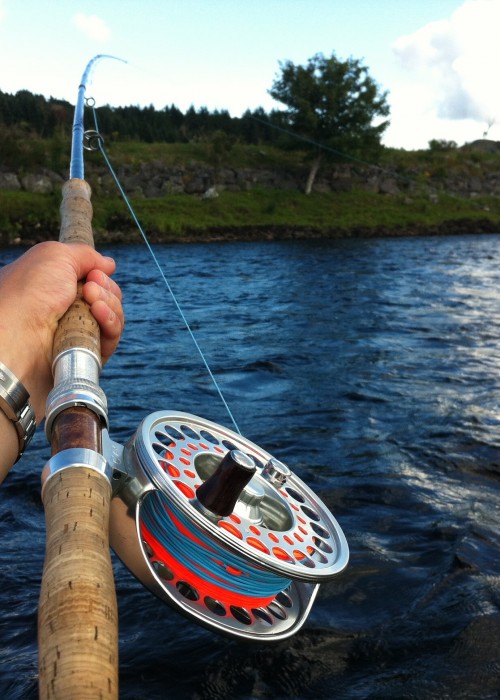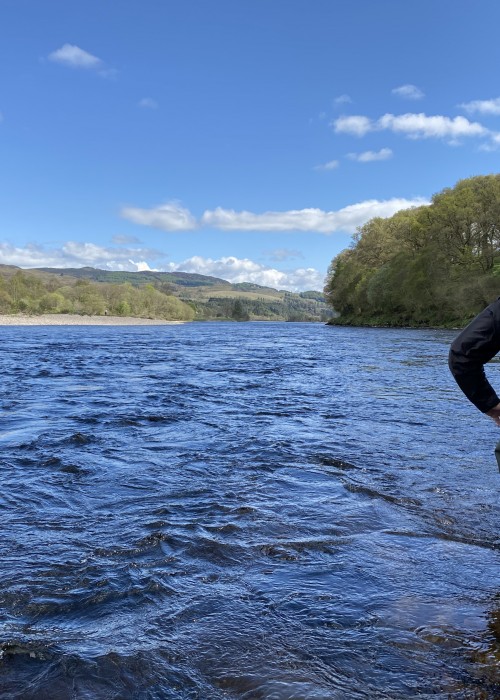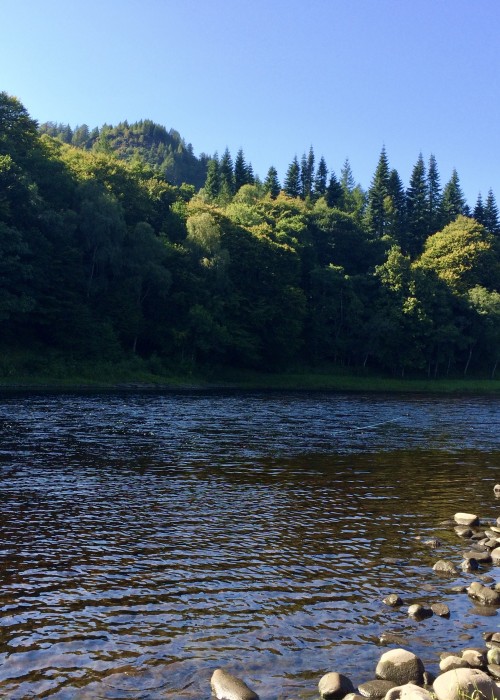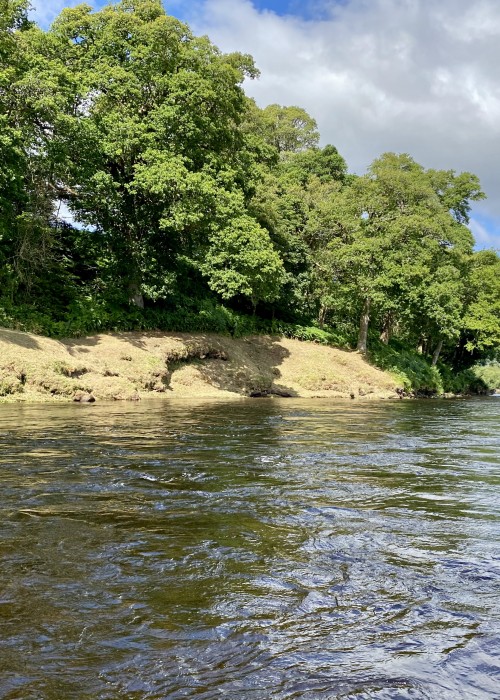





How to understand the importance of controlling the speed & depth of your salmon fly which is a vital skill when fishing for salmon in Scotland.
When wishing to slow your salmon fly up in a fast stream (when a steady slower paced fly is required) you should throw an upstream line mend soon after your fly line lands on the water after each forward delivery (cast) as demonstrated in this accompanying video. In really fast water sometimes a 2nd mend half way through the fly's swing is also required if you feel the fly is starting to swim too fast at this point of it journey. This narrowing of the angle of the line reduces the water pressure drag on the line’s surface which will slow up your fly up in fast water giving you full control of your salmon fly and therefore fishing correctly. Sometimes a fast swimming fly is also required in warmer water conditions so in this case no mend (or even a downstream mend) is required which will allow the fly to zip across the pool quickly. This sort of tactic can be perfect when fishing the long black winged 'Sunray Shadow' type of fly pattern especially when salmon have not reacted to the conventional slower paced salmon fly approach.
If an additional reduction of fly speed is required you can also hold the rod tip out and in a high position for the first half of the swing gradually lowering and bringing the rod around to the final downstream riverbank angle before re-casting so again you’re reducing the fly line's contact angle with the fast water through the first half of the swing which will extend further the fly’s swim time even in the fastest of streams. This is a very useful tactic to master especially while fishing a long line where without this skill your salmon fly would swing around far too quickly to fish effectively due to the fast water making contact with your fly line.
The upstream mend will also assist your sink tip to bed in (if you’re fishing with a sink tip) and sink your fly down before the current tightens your fly line and your fly starts to fish. The most important thought process you can have while salmon fishing is actually concentrating on the speed and depth of your fly rather than getting caught up with thoughts about the arial performance of your fly line as most salmon fishers do. Understand that the speed & depth of your fly is a very important part of salmon fishing and that your fly can be slowed up with an upstream mend in faster water as it is presented to the river or even speeded up (as mentioned above) with a downstream mend when required in a fast or slow stream water. Book a professional salmon fishing guide to teach you these important salmon fly 'fishing' skills.
Over the decades of careful riverbank observations (and putting sub surface salmon fly swim thought adjustments into practice) and gaining complete faith in getting away from the salmon fly swim robotics of regular salmon fishers I can 100% confirm that if you want extra success in this pursuit you have to literally become the salmon fly and adjust your fly's depth & swim pace behaviour to exactly where you think your target audience is located and what is likely to entice them. Making your fly stand out in the crowd via carefully considered depth & pace thougths or sometimes even delivering it from a different side of the river can trigger salmon fly investigations that regular fly swim patterns won't get the benefit of. Whatever you do don't be a 'launch & hope' specialist as salmon more often than not require that extra dimension of planning.
If you really want to stand the best chance of a sub surface investigation while fly fishing over deep lying resident salmon that have been heavily bombarded you need to take your tactical fly swim approach to a much higher 'annoyance' level. Firstly make sure your water column depth planning is targetting exactly where you suspect salmon to be holding via adding the appropriate sink tip and that you've also considered what speed of fly to fish. Once you've got those 2 basics in place your objective is to now show these stubborn fish something they're highly unlikely to have ever seen before. To do this effectively you need to now beome the conductor of the Last Night Of The Proms and shudder, flick, pull and waggle your rod tip consistently through the full course of the return swim of your fly between each cast. Giving salmon an erratic & unpredictable salmon fly will wake them up whether you're aware of the sub surface commotion you're creating or not. If you were a salmon that's seen it all what fly are you going to come and take a closer look at? The fly that bores the pants off you with its mundane steady predictable swim path action or the completely unpredictable 'crazed Ninja' fly that darts, pauses, sags before it zips away again! Try what I've suggested when you know you're covering stubborn educated salmon and feel the difference for yourself!